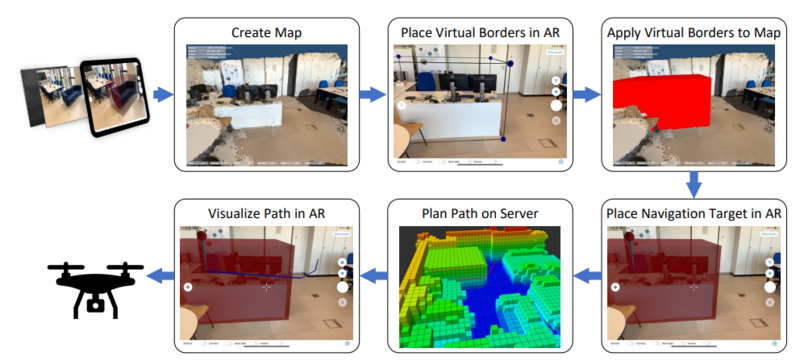Summary
- Profile Type
- Technology offer
- POD Reference
- TODE20231010007
- Term of Validity
- 10 October 2023 - 9 October 2025
- Company's Country
- Germany
- Type of partnership
- Research and development cooperation agreement
- Investment agreement
- Targeted Countries
- All countries
Contact the EEN partner nearest to you for more information.
Find my local partner
General information
- Short Summary
- Researchers from a German university developed a software that establishes and identifies virtual boundaries for autonomous robots. It is based on an augmented reality environment. The key to this technology is that the working area boundaries are monitored in three dimensions, so a volume that the robot may not enter can be stipulated. The university offers a license and/or technological cooperation agreement.
- Full Description
-
Safety first: Robots must not hurt people, and objects must be protected from collisions. So robots must know the working area in which they can move safely.
Help is coming in this area in the form of an invention from a German university: software that establishes and identifies virtual boundaries for autonomous robots. It is based on an augmented reality environment that uses RGB-D (red,green, blue and depth) data, a format that links a camera image of the environment with spatial depth information. Sensors are already built into many mobile devices, such as smartphones and tablets. The key to this technology is that the working area boundaries are monitored in three dimensions, so a volume that the robot may not enter can be stipulated.
Since people and autonomous assistance systems increasingly share environments, such delimiting capabilities will become more and more important. A fast-growing market potential for such software-based autonomous robot control systems is forecast – both for private applications (house and garden) and for industrial use such as manufacture and storage. Initial prototypes have been manufactured, measured, and tested. System function and operation are shown in an illustrative video.
The university is offering a licensing agreement to companies in the robotics, sensor and electrical engineering industries. Technological cooperation agreements are also conceivable in order to further develop the technology in collaboration with the inventors. - Advantages and Innovations
-
The main advantages of the presented technology are:
- Simple detection of 3D spatial boundaries
- Software-based solution
- Six degrees of freedom - Stage of Development
- Under development
- Sustainable Development Goals
- Goal 9: Industry, Innovation and Infrastructure
- IPR status
- IPR applied but not yet granted
- IPR notes
- Registration with the German Patent and Trade Mark Office and other subsequent international applications can be made in the priority year.
Partner Sought
- Expected Role of a Partner
- The university is offering a licensing agreement to companies in the robotics, sensor and electrical engineering industries. Technological cooperation agreements are also conceivable in order to further develop the technology in collaboration with the inventors.
- Type and Size of Partner
- Big company
- SME 11-49
- Other
- SME <=10
- SME 50 - 249
- Type of partnership
- Research and development cooperation agreement
- Investment agreement
Dissemination
- Technology keywords
- 001001004 - Electronic engineering
- 01001001 - Automation, Robotics Control Systems
- Market keywords
- 02007016 - Artificial intelligence related software
- 08002004 - Robotics
- 02007011 - Manufacturing/industrial software
- Targeted countries
- All countries
